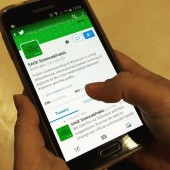Scientists and science communicators are people who see knowledge as a foundation for actions and behaviours, right? A scientist, planning an experiment, will know all about the latest research in their field to maximise their chance of success. We build new knowledge on the knowledge of others.
But how often will a science communicator or scientist-who-communicates-science stop and think whether what they are doing communication-wise is based on current best practice? Do they check whether someone has already done what they are doing or planning on doing? Have other people been successful? Is there a way to do things better?
I’m always surprised when I meet people in science communication who aren’t engaged with science communication research. To me, it’s just applying what I was taught to do as a scientist. “But I can’t access the journals!” I hear people say, or “I don’t know what journals to looks at!” which are probably fair comments – but there are ways around this as you will soon see.
And there is also the good old “I don’t have time to keep up with research”. I think this is an interesting comment given we expect the busy general public to keep reading the vast amount of science writing that we collectively produce to keep up with the latest research.
It doesn’t have to take up a lot of time to keep up with science communication research. In fact, you could end up saving yourself considerable time in the long run by avoiding wasting time on something and, who knows, we might actually be able to improve public engagement with science!
So here are my five things that you can do right now to keep up-to-date with science communication research. All you need is access to the internet!
1) Set yourself up to get email alerts/newsletters from the key journals
You may not be able to get the whole papers, but you can read the abstracts (and who really wants to read more than that, right?). In my opinion, the key journals in our field are:
- Public Understanding of Science (SAGE journals)
- Science Communication (SAGE journals)
- International Journal of Science Education, Part B (Taylor and Francis)
There are other journals too, of course, and more theoretical ones if you are interested, but these will get you started.
2) Follow the journals on social media
Public Understanding of Science now has a blog and a Twitter account (@SciPublic). Again – links may only take you to abstracts but if you are just wanting to get a feel of current trends that may be enough. Journal of Science Communication has a facebook page.
3) Use Google Scholar
This platform will allow you to search for science communication research articles if you don’t have access to library databases. You should know this already, but I’ve learned never to assume. Again, you might only get abstracts, but you never know.
4) Follow key science communication researchers on social media
Science communication researchers are using social media to reach out to their audiences in the same way as science communicators. In fact, several science communication researchers currently research how to use social media to communicate science! Once you’ve found people who publish on things you are interested in, find out if they have a Twitter account or blog and start following. They will probably share information about more than just their own research. This includes accounts and Facebook pages for research organisations and groups too!
5) Follow key researchers on Academia and/or ResearchGate
If you are currently in research, you might already have a profile and do this for your specific field. But you should also put in “science communication” as a term, and see who you pull out. If you are not in research you may have never heard of these sites before! Quite often researchers will place open access versions of their papers, or conference presentations on their pages that you can download, no matter where you work.
So there you have it! At least 3 of these are set and forget type things that will have the latest research delivered straight to you. And there are lots of other options to stay in touch, not in the least to have an enthusiastic friend who will send you random things they read! Yes, of course it will take some time to read the things that come by, but I think we owe that to ourselves and our audiences. If nothing else, putting yourself in the position of the audience will remind you how it feels to have to open your mind to new information, especially if it challenges what you already thought about how to communicate science.
Heather Bray is an ex-scientist, science communicator and researcher at the University of Adelaide. She is a member of the ASC committee in SA. She manages a research group blog, as well as having personal and research blogs. She is on Twitter @heatherbray6.
